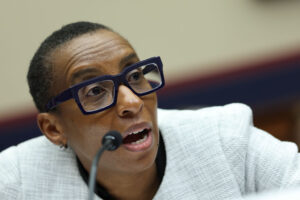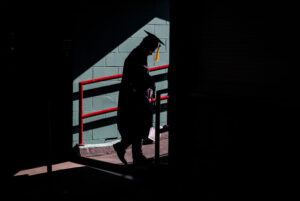Equality, Diversity and Inclusion (EDI) is a set of notions that has long sat uneasily within a university. But now the situation is becoming even worse: imitating the United States, EDI is metamorphosing into DEI (Diversity, Equity and Inclusion), whereby the reparative nature of Equity is employed to exclude (so much for Inclusion) those who have performed better, but cannot produce evidence that they suffer from a prescribed list of disadvantages. When a great university turns aside from its pursuit of outstanding excellence and indulges in social engineering, it threatens its very foundations.
One might, therefore, feel relief at the proposal to abandon the targets for state-school admission that Cambridge University has been pursuing in recent years, currently set at 69%. In fact, the state-school intake now exceeds 70%, and it was always an extremely crude instrument of measurement. This is part of a broader mulling-over of Cambridge’s admissions procedure for undergraduates, which is always a challenge: nearly 30 colleges admit students independently, and they all jealously guard their autonomy against any attempt to centralise the process.
The general new idea is to concentrate on the contextual criteria that are also applied, such as the receipt of free school meals, poorly rated schools and other evidence of social and economic disadvantage. But as worthy as this sounds, a new injustice is being committed: against many bright products of independent schools who in recent years have been denied a place so that colleges can force their way up the table of state-school percentages. Many have gone instead to Durham, St Andrews, Bristol, Imperial and other excellent Russell Group universities. But many of these universities have also indicated that they would like to reduce their independent school intake.
The grounds for rejection of so many very capable students were in my view largely fabricated: the notion was that college admissions should concentrate not on “performance” such as past exam results, but “potential”, which would be identified in interview, in written work and in contextual evidence. This, though, is just a play with words. Dons had always considered potential and many, perhaps most, learned how to recognise students with minds of their own, who had not simply become A* performers of rote learning.
Today, however, it has become very easy for dons to dismiss accomplished products of Eton or St Paul’s as “well-taught”, shoving them into a category they did not deserve. Occasionally this has been the product of what can only be described as macro-aggression. I know of a tutor at another ancient university who quite simply refused to accept any applicants from independent schools. I do not believe that she was unique. The two schools I have already mentioned rightly wonder why their acceptance figures have dipped so steeply and rapidly. Behind the scenes, many colleges operate not targets but quotas.
The background to all this is, nonetheless, change for the better. Half a century ago, entrance to Oxbridge was dominated by famous public schools which sent extremely bright people to both universities, but could also wangle places for those who were good on the river, so long as they achieved passable results in their exams. But this history is too often simplified and caricatured. The post-war period saw a wave of students from grammar schools, and in particular from the direct-grant schools, such as King Edward’s School in Birmingham, that occupied a middle ground between the fully independent sector and the state sector. Past statistics are now manipulated to ignore the valuable social role these schools played in providing places for children from all backgrounds, many on full scholarships. Later, after the abolition of the direct grant in 1976, the assisted places scheme brought many children into private schools their parents could not afford. The abolition of this excellent scheme was the very first act of Tony Blair’s government. And the current Labour Party has similar plans to seize upon independent schools as one of its very first acts by vengefully imposing VAT on school fees.
It goes without saying that parents, not their children, choose whether or not to send their sons and daughters to an independent school, assuming they can afford it, and many forego luxuries in order to do so. But many such private schools also operate upon a principle of academic selection, which is also how the most successful state schools achieve good results. Oxford and Cambridge draw some of its best and brightest from such schools as Queen Elizabeth’s in Barnet, predominantly middle-class Londoners who once upon a time might have been educated privately (and who instead pay the effective fees contained within local house prices, such is the competition for places). Perhaps, then, it should have come as less of a surprise that the late Vice-Chancellor of Cambridge, Stephen Toope, insisted that he wanted to make it “very, very clear” that selective grammar schools as well as independent schools deserve to win fewer places at Cambridge. More sensible is the view of his successor, Deborah Prentice, that Cambridge should draw more students from the north of England, since the south-east absolutely dominates undergraduate intake. That would represent genuine diversity.
Yet in the meantime, there are good reasons to worry about genuine injustices that arise when admissions tutors dig in their heels and refuse to accept excellent candidates from all types of selective school. I have heard too many stories of angry struggles between Fellows and admissions tutors over this, not to mention irritated complaints by long-suffering heads who have seen their top pupils turned down for places that they seemed certain to obtain. Some of these candidates may have wrecked their chances by a bad interview; but that cannot be the case each time. The suspicion of injustice is accentuated when a college accelerates its state-school intake within two or three years from around 56% to 72%. This can only be achieved, in my view, by a rigorous policy of positive discrimination and the mistaken admission of students who sometimes find themselves struggling with their work. In several colleges that used to be near the front of the tables of degree results tables this has been reflected in dreadful scores in once highly successful arts subjects. Meanwhile science dons remain very worried about the level of accomplishment of students whose schools seem to have taken a Lowest Common Denominator approach to education in science and mathematics, particularly in mixed-ability classes, teaching at a level that suits the weakest students.
The other side of the coin is that state schools that used to shun Oxbridge have become more enthusiastic about sending their pupils to either university, and the good news is that this has steadily increased numbers arriving from those schools. There was undoubtedly a barrier of prejudice, which turned on the myth that Oxford and Cambridge were themselves places that heave with social prejudice. We are often told by so-called modernisers that state school candidates are deterred by the supposedly arcane rituals of the ancient colleges. The sight in my own college of masses of enthusiastic male and female students from all backgrounds dining in Hall wearing their distinctive dark blue gowns, as well as the still overwhelmingly popular traditions of black-tie balls, gives the lie to that argument.
It has long been understood that, where two borderline candidates of equal merit are competing for the same place, it is generally right to take into account disadvantages that one might have experienced and to favour him or her. That seems to me to be acceptable, but the danger with the new proposals is that “contextual information” will be promoted to a dominant position, and we will end up with quotas masked as “targets” once again. Much depends on what this contextual information contains: private school pupils on scholarships and bursaries may come from low-income families; some may receive free school meals. There is an opportunity here to identify candidates who often fell into a crack in the past. But the ultimate test has to be the academic excellence of the candidate.
What I am saying should not, therefore, be regarded as an attempt to sing the virtues of independent schools but as an argument that all candidates deserve unprejudiced treatment, whatever their background and whatever type of school they attend. It is not the task of universities, especially those with the highest academic reputation, to solve problems lower down in the British system of education.
The reputation of Oxford and Cambridge depends on the outstanding quality of their teachers, researchers and, last but not least, its students. These leading universities are avowedly highly selective, and — if they want to remain among the top in the world — the criterion for selection, whether of students or lecturers and professors, must always be academic ability. The proposal to abandon the state-school target should be welcomed; but the danger remains that the pursuit of American-style Equity will do irreparable damage to Oxbridge and our other leading universities.
Disclaimer
Some of the posts we share are controversial and we do not necessarily agree with them in the whole extend. Sometimes we agree with the content or part of it but we do not agree with the narration or language. Nevertheless we find them somehow interesting, valuable and/or informative or we share them, because we strongly believe in freedom of speech, free press and journalism. We strongly encourage you to have a critical approach to all the content, do your own research and analysis to build your own opinion.
We would be glad to have your feedback.
Source: UnHerd Read the original article here: https://unherd.com/



